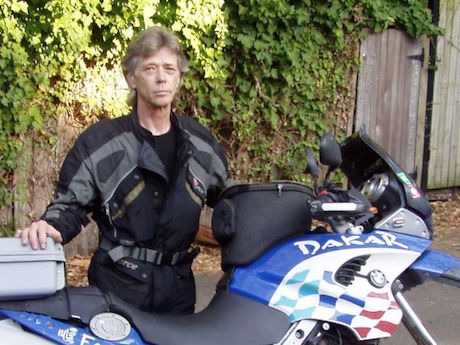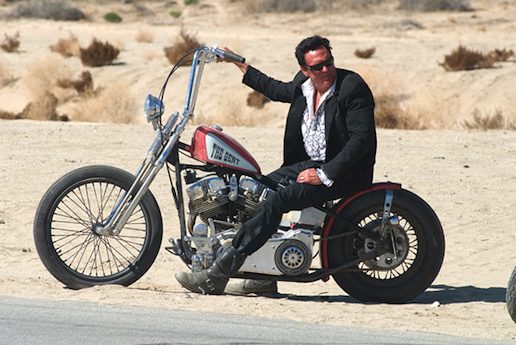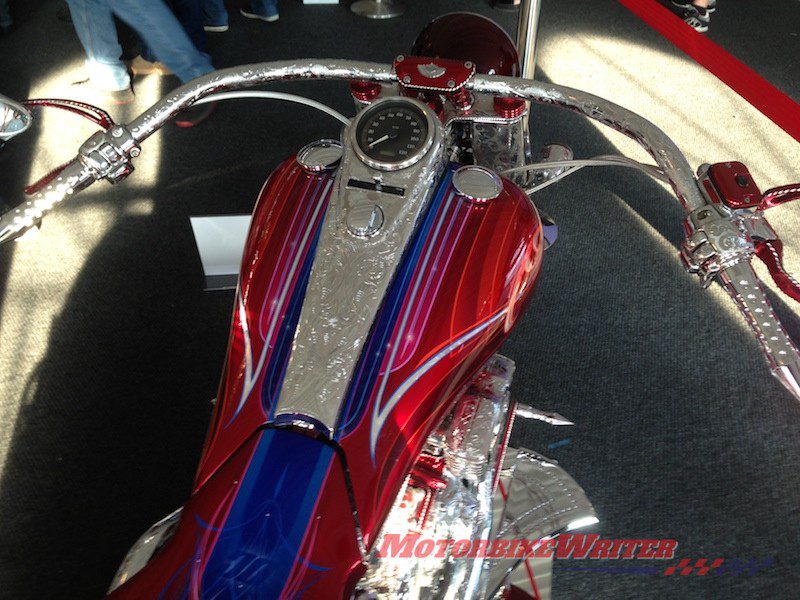The arcane rules and regulations on handlebar measurements are made more confusing for riders by the different interpretations and amendments of each state.
Longtime motorcycle campaigner Wayne Carruthers says some states have not appreciated the 2005 and 2016 changes in regulations.
“Many states still have clauses with the old height and width measurement systems which are overridden by clauses mandating ADRs where there is an ADR,” he says.
Click here to sign the petition
Wayne has compiled an amazingly comprehensive “summary” of the states’ handling of handlebar Australia Design Rules. (Warning you will grow old reading through it, so we suggest going straight to your state section for details.)

Here is his ADR57-00 Handlebar State Summary and state-by-state analysis:
Summary of regulations
The current state of play on the ADR and the State Vehicle Standards legislation is problematic in terms of interpretation where the method of measurement of handlebar height is specified differently in some state regulations.
Many states have not updated the State Regulation clauses to the wider handlebars allowed in the latest ADR 57/00 or the 2006 ADR 57/00 specification of the method of measurement of the height of handle bars.
Meanwhile, the same state regulations also state if a second or third edition ADR applies to the design and construction of a vehicle, the vehicle must comply with the ADR.
It would appear some who are customising bikes may have been reading the state regulations without realising the clauses mandating the ADR compliance would override the out-of-date state regulation clauses and have been doing so since 2005.
The 2015 increase in allowable width of handlebars in ADR 57/00 to 1100mm is realistic as it allows for the width of fittings on the end of the handlebars such as hand guards fitted to many adventure models or dirt oriented smaller capacity machines.
Handlebars for these models available in the market place are between 770 and 840mm wide with and hand guards extending up to 70mm further on each side totalling 980mm.

Manufacturers of handlebars will void warranty where handlebars are shortened or drilled.
The 2006 ADR 57/00 set a national standard for the allowable height of handlebars and the method of measurement of height was different to the provisions in some State Regulations. It lowered the height of handlebars which was allowed in some States.
The reason is that the height of the mounting point of the handle bars to the steering head is higher than the lowest part of the upper surface of the driver’s seat despite the actual height value of 380mm allowed remaining the same.
On one model of adventure bike measured, the lowest height of the top of the seat is around 150mm below the top of the fork yoke and the mounting location of the handlebars is a further 40mm above the height of the top of the fork yoke. This takes up to 190mm out of the height previously allowed in some state regulations.
There would also be a valid argument that the 2006 ADR 57/00 reduces safety by removing the minimum width where handlebars are higher than 205mm above the top of the steering head. Some state regulations previously mandated a minimum width of 660mm for handlebars higher than 205mm above the handlebar mounting location.
There are claims that there are little to no restrictions on handlebar width and height in the US but a 2005 research report shows 34 US States had restriction on handlebar height with some laws going back to 1967.
Some 20 US States use a similar measurement method as ADR57/00 of 380mm (15”) above the lowest point of the top of the seat, other states require the hand grips to be below shoulder height of the rider.
The author of the US research could find very little data to support the US restrictions but the concerns raised were of the ability to control a bike, blood flow and arm fatigue, obstruction of the rider in an accident.
The author also noted there appeared to be very little enforcement of the regulations and that all the bike models surveyed were well within the allowable heights so there was no issue of motorcycles on the market not meeting the various US State regulations.

State and Federal Details
Prior to 2006, specification of handlebar width and height was done by State regulatory Authorities.
Federal ADR
ADR 57/00 was created on 21/7/2006 then changed on 10/12/15 & again on 16/11/16
It applies to 2 wheel Moped & Motorcycles Manufactured after 1/7/1998.
ECE R 60/100 is considered equivalent for other items but does not cover handlebar width & height.
2015 amendment 1 & 2016 amendment 2 was to clause 57.2.2.1, handle bar width
2006
Handlebars must extend not less than 250 mm nor more than 450 mm on each side of the centreline of the vehicle.
2015
Handlebars must not extend:
(a) less than 250mm on each side of the centreline of the vehicle for all L Group vehicles;
(b) more than 450mm on each side of the centreline of the vehicle for LA, LB and LE category vehicles; or
(c) more than 550mm on each side of the centreline of the vehicle for all LC and LD category vehicles.
There was a drafting flaw in the 2015 ADR as it stated clause 57.2.2.1 (b) applied to LB & LE vehicles but ADR 57/00 only applies to LA – Moped 2 wheels, LC – Motor cycle, LD – Motorcycle and sidecar categories
2016 amendment 2 was to clause 57.2.2.1
Handlebars must not extend:
(a) less than 250mm on each side of the centreline of the vehicle for all LA, LC and LD category vehicles;
(b) more than 450mm on each side of the centreline of the vehicle for LA category vehicles; or
(c) more than 550mm on each side of the centreline of the vehicle for all LC and LD category vehicles.
The 2016 amendment corrects the drafting error in the 2015 amendment
Clause 57.2.2.1 (handlebars) is criticised by sports bike owners who use clip ons a little under 500mm wide.
The handlebar height in ADR 00/57 has remained unchanged since 2006.
57.2.2.2. The height of the lowest part of the handgrip above the lowest part of the upper surface of the driver’s seat must not exceed 380mm.
There is legislation before Federal Parliament to replace the current Motor Vehicle Vehicle Standards Act 1989 which will take effect in 12 months and then have a further 12 month transition period.
Old State Requirements
Earlier requirements in some States measured the height differently. The measurement was either height above the top of the steering yoke or height above the mounting point of the handlebars.
Eg: The highest point on the handlebar must not be more than 380mm (W) above the top of the steering yoke.
Where the highest point of the handlebar is more than 205mm vertically above the top of the steering yoke (W), the distance between the extreme ends of the handle bar (V) must not be less than 660mm.
Or: The lowest part of the hand grip on the handlebars must not be higher than 380 millimetres above the attachment point of the handlebars to the motorbike.
Queensland
Abides by ADR 57/00 & VSB14 but the Vehicle Standards and Safety Regulations is not updated.
(1) If a third edition ADR applies to the design and construction of a vehicle, the vehicle must comply with the ADR.
45. Steering gear and handlebars
(1) The handlebars on a motorbike must extend at least 250 millimetres, but not over 450 millimetres, on each side of the longitudinal axis of the motorbike.
(2) In taking a measurement for subsection (1) , mirrors and lights mounted on the handlebars of the motorbike are disregarded.
(3) The lowest part of the hand grip on the handlebars must not be higher than 380 millimetres above the attachment point of the handlebars to the motorbike.
(4) Hand grips on the handlebars must be fitted symmetrically.
(5) If a motorbike has the head stem as the steering pivot point, the horizontal distance from the midpoint between the head stem bearings to the centre of the front wheel must not be over 550 millimetres.
NSW
Basically Abides by ADR 57/00 but the State standard has not been updated.
VSI-28-Guidelines issued in 1998 stated
On motorcycles manufactured before 1 July 1988 (Fig.1):
a) The handlebar must have the same shape and be of same length on either side of the front wheel and steering head assembly.
b) The distance between the extreme ends of the handlebar (V) must not be less than 550mm.
c) The highest point on the handle bar must not be more than 380mm (W) above the top of steering yoke.
d) Where the highest point of the handle bar is more than 205mm vertically above the top of steering yoke (W), the distance between the extreme ends of the handle bar (V) must not be less than 660mm.
On motorcycles manufactured after 30 June 1988 (Fig.2):
a) The handlebar must have the same shape and be of same length on either side of the front wheel and steering head assembly.
b) The distance between the extreme ends of the handle bar (X) must not be less than 500mm and not more than 900mm.
c) The height of the lowest part of the handgrip must not be more than 380mm above the lowest part of the upper surface of the rider’s seat (Y).
d) The horizontal distance between midpoint of the steering yoke bearing and a point vertically above the centre of the front wheel must not exceed 550mm.
Road Transport (Vehicle Registration) Regulation 2017
22 (1) If a third edition ADR applies to the design and construction of a vehicle, the vehicle must comply with the ADR.
Division 2 Additional requirements for motor bikes
53 Steering gear and handlebars(cf ALVSR 2015 r 53; 2007 reg Sch 2 cl 57)
(1) The handlebars on a motor bike must extend at least 250 millimetres, but not over 450 millimetres, on each side of the centre line of the vehicle.
(2) In taking a measurement for subrule (1), mirrors and lights mounted on the handlebars of the motor bike are disregarded.
(3) The lowest part of the hand grip on the handle bars must not be higher than 380 millimetres above the attachment point of the handlebars to the motor bike.
(4) Hand grips on the handle bars must be fitted symmetrically.
(5) If a motor bike has the head stem as the steering pivot point, the horizontal distance from the midpoint between the head stem bearings to the centre of the front wheel must not be over 550 millimetres.
Victoria
Basically Abides by ADR 57/00 but the State standard has not been updated.
The Vehicle Standards Information (VSI) sheet 14 issued January 2000 stated
Handlebars on all motor cycles and mopeds must be at least 500mm wide and not more than 900mm wide, and must be mounted symmetrically. The handgrips must be not more than 380mm higher than the point of attachment of the handlebars to the vehicle.
The current Road Safety (Vehicles) Regulations 2009 state
20 Compliance with third edition ADRs
(1) If a third edition ADR applies to the design and construction of a vehicle, the vehicle must comply with the ADR.
So the updated ADR 57/00 applies but the State standard has not been updated.
55 Steering gear and handlebars
(1) The handlebars on a motor cycle must extend at least 250 millimetres, but not over 450 millimetres, on each side of the centre line of the vehicle.
(2) In taking a measurement for subclause (1), mirrors and lights mounted on the handlebars of the motor cycle are disregarded.
(3) The lowest part of the hand grip on the handlebars must not be higher than 380 millimetres above the attachment point of the handlebars to the motor cycle.
(4) Hand grips on the handlebars must be fitted symmetrically.
(5) If a motor cycle has the head stem as the steering pivot point, the horizontal distance from the midpoint between the head stem bearings to the centre of the front wheel must not be over 550 millimetres.
Tasmania
Basically abides by ADR 57/00 but the State standard has not been updated.
20. Compliance with third edition ADRs
(1) If a third edition ADR applies to the design and construction of a light vehicle, the light vehicle must comply with the ADR.
57. Steering gear and handlebars
(1) The handlebars on a motor bike must extend at least 250 millimetres, but not over 450 millimetres, on each side of the centre-line of the motor bike.
(2) In taking a measurement for subregulation (1) , mirrors and lights mounted on the handlebars of the motor bike are disregarded.
(3) The lowest part of the hand grip on the handlebars must not be higher than 380 millimetres above the attachment point of the handlebars to the motor bike.
(4) Hand grips on the handlebars must be fitted symmetrically.
(5) If a motor bike has the head stem as the steering pivot point, the horizontal distance from the midpoint between the head stem bearings to the centre of the front wheel must not be over 550 millimetres.
South Australia
Basically abides by ADR 57/00 but the State Regulation is not updated.
20 Compliance with third edition ADRs
(1) If a third edition ADR applies to the design and construction of a vehicle, the vehicle must comply with the ADR.
56. Steering gear and handlebars
(1) The handlebars on a motor bike must extend at least 250 millimetres, but not over 450 millimetres, on each side of the centre-line of the motor bike.
(2) In taking a measurement for subregulation (1) , mirrors and lights mounted on the handlebars of the motor bike are disregarded.
(3) The lowest part of the hand grip on the handlebars must not be higher than 380 millimetres above the attachment point of the handlebars to the motor bike.
(4) Hand grips on the handlebars must be fitted symmetrically.
(5) If a motor bike has the head stem as the steering pivot point, the horizontal distance from the midpoint between the head stem bearings to the centre of the front wheel must not be over 550 millimetres.
Western Australia
Basically Australian Standards apply but the current state standard is not updated.
238 Compliance with third edition ADRs
(2) If a third edition ADR applies to the design and construction of a vehicle, the vehicle must comply with the ADR.
271. Motor cycle Steering gear and handlebars
(1) The handlebars on a motor bike must extend at least 250 millimetres, but not over 450 millimetres, on each side of the centre-line of the motor bike.
(2) In taking a measurement for subrule (1) , mirrors and lights mounted on the handlebars of the motor bike are disregarded.
(3) The lowest part of the hand grip on the handlebars must not be higher than 380 millimetres above the attachment point of the handlebars to the motor bike.
(4) Hand grips on the handlebars must be fitted symmetrically.
(5) If a motor bike has the head stem as the steering pivot point, the horizontal distance from the midpoint between the head stem bearings to the centre of the front wheel must not be over 550 millimetres.
Northern Territory
Basically Australian Standards apply but the current State standard is the pre-2006 57/00 standard.
20 Compliance with third edition ADRs
(1) If a third edition ADR applies to the design and construction of a vehicle, the vehicle must comply with the ADR.
55. Steering gear and handlebars
(1) The handlebars on a motor bike must extend at least 250 millimetres, but not over 450 millimetres, on each side of the centre-line of the motor bike.
(2) In taking a measurement for subrule (1) , mirrors and lights mounted on the handlebars of the motor bike are disregarded.
(3) The lowest part of the hand grip on the handlebars must not be higher than 380 millimetres above the attachment point of the handlebars to the motor bike.
(4) Hand grips on the handlebars must be fitted symmetrically.
(5) If a motor bike has the head stem as the steering pivot point, the horizontal distance from the midpoint between the head stem bearings to the centre of the front wheel must not be over 550 millimetres.
ACT
Abides by ADR 57/00 as amended in 2016


